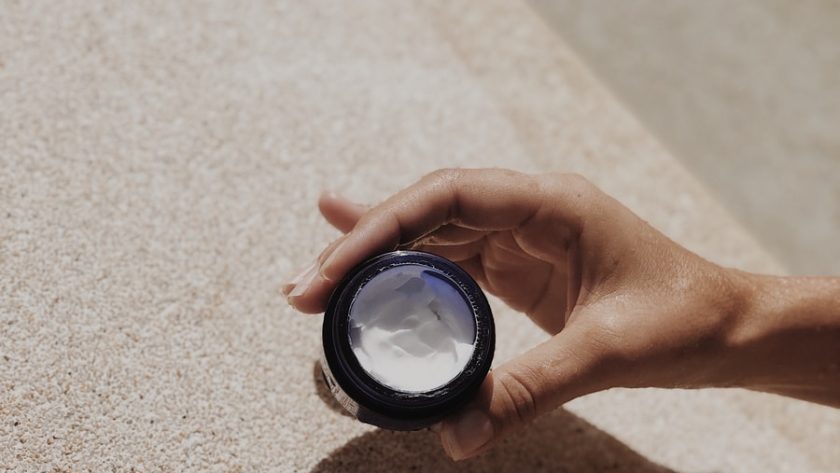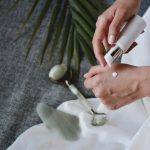Experts offer their thoughts on eye creams, hand creams, foot creams, and other topics.
Tubes of eye creams. Pots of hand lotions. Special jars for “foot-only” lotions You probably have several lotions for different parts of your body if you are trying to moisturize your skin. It’s easy to get overwhelmed by all the specificity. Are left and right earlobe products going to be the next big thing in skin care?
Experts were consulted to determine which creams should go where and whether it is okay to apply hand lotion to your feet or foot cream to your elbows. Here are their comments.
News flash: Not all skin is the same.

Although skin is commonly referred to simply as one organ, it actually contains “microclimates”, which require special attention. There may be differences of opinion on how many areas are involved, but experts recommend at least using a few formulations.
“The skin on different parts of the body can have different characteristics and needs,” dermatologist Shadi Kourosh says. “It all depends on what problems you’re trying to solve.”
When it comes to skin cream, “one size does not fit all,” dermatologist Hope Mitchell said. There’s good reason, she explained: “The skin on the eyelids (cheeks, eyes, and legs) is the thinnest to allow for greater flexibility. The thickest skin is found on the elbows, palms, soles, and fingers. This helps to prevent injury from frequent use.”
What is in each of these products?
“There are three basic categories of ingredients for moisturizers – humectants, emollients and occlusives,” dermatologist Jennifer David said.
David explained that humectants are water-grabbing ingredients that help skin retain a healthy moisture level. Glycerin is one of the most common humectants. She stated that humectants can be used anywhere, but are especially helpful in the areas around the eyes and neck, chest, backs of the hands, and neck.
“Emollients are oil-based substances that smoothen the skin and give it a silky feel. You should look for ingredients such as coconut oil, squalene and lanolin. They are great for any part of the body, particularly in dry, cold weather.”
David stated that occlusives (which are listed on labels as waxes or butters, petrolatum, and heavy silicons) seal everything within a water-resistant barrier. They can be used in a balm to treat extremely dry skin patches, as well as the hands and feet. However, they should not be used on acne-prone skin.
David suggested that once you have a better understanding of the ingredients, you can read a bit more labels. You want to know whether you are using a cream or a lotion. “A lotion is lighter and more suitable for warmer climates. A lotion usually contains more water-soluble moisturizers. A cream-based moisturizer has more occlusives and emollients ad more suitable for cold climates.”
These are the parts of your body that you might need a special product.
“Skin care companies want you to believe that every body part requires a different cream or moisturizer because it can sell more products,” said Troy Pittman, a plastic surgeon. “You don’t have to buy a different product for each part of your body, even though some areas may have thinner skin or are oilier or drier. You can use the same product on your legs, elbows and arms as well as your feet, abdomen, and arms.”
Pittman identifies the neck and face as areas that require special products. The reason is that the skin on the neck and face are less thick and tougher, as well as being more exposed to the sunlight. You also make expressions with the skin, which causes more wear and tear.
We were told by Joshua Zeichner, a dermatologist who is also an associate professor of dermatology at Mount Sinai Hospital that “The eyes are the only exception I make. The skin around the eyes can be among the most delicate and thinnest parts of the body. To make it more tolerable, many eye creams containing potentially irritating ingredients have lower concentrations.”
Wait, experts say there is at least one other area that needs special attention: “Lips really need their own products,” David stated. The epidermis is much thinner than the rest, and it lacks pigment and sebaceous glands. Protect the skin against the elements with petrolatum or other heavy occlusives. Consider a lip balm that has SPF, as the lips are generally devoid of melanin.
These expert tips can help you save money.
Zeichner stated that the Veline Petroleum Jelly is her all-time favorite and most-used skin care product. It’s versatile and can be used on all parts of the body, from your lips to your eyelids to your feet.
“For the most part, you can divide products into face and body creams,” Cheri Frey, a dermatologist and assistant clinical professor of dermatology at Howard University, said. “You can use what you put on your back on your arms too. I recommend that you use a body moisturizer to all areas of your skin. Then, apply topically a cream to treat any problem areas, for example, for eczema spots.”
“Given the high price of many products, it is important to keep expensive stuff where they will do the most good,” says Michele Wong, chemistry Ph.D., and founder of Lab Muffin Beauty Science. She explained that body products can be spread over larger areas while face products are meant to be used in a limited area. You may be able to save money by using more effective ingredients in smaller areas.
These are the top picks of experts for body-part-specific and all-over use.

Multi-use: Cetaphil Sheer Hydration body lotion
David stated that the product is gentle, moisturizing, and non-comedogenic. It won’t clog pores or worsen acne. Mitchell stated that it is a great all-over choice and can be used on hands, elbows, and feet. Pittman stated that the lotion offers 48-hour hydration, leaving skin feeling hydrated and refreshed. It can be purchased from Amazon for $6.99.
Multi-use: La Roche-Posay Cicaplast Balm
Wong recommends this soothing cream for all skin types: It can be used for any skin irritation.
Target sells it for $14.99
Multi-use: La Roche-Posay Lipikar Balm AP+ intense repair body cream
Frey stated, “This is my favourite all-over cream.” It’s extremely moisturizing, leaving my hands and feet feeling soft. It won’t clog pores so it can be used on the face.”
Amazon has it for $19.99
For eyes: Neutrogena Hydro Boost hydrating gel eye cream
Mitchell stated that the product is light in consistency and absorbs quickly into the skin. Hyaluronic acid boosts skin moisture to give skin a younger, healthier appearance.
Amazon has it for only $12.68
Burt’s Bees Coconut Foot cream is for feet
Pittman stated that vitamin E soothes inflammation and softens skin. It’s free of parabens, petrolatum and phthalates. Mitchell stated that it is also great. You can get it on Amazon for $5.69.
For hands: Du’it Tough Hands intensive skincare
Wong stated that it contains a lot of the humectant known by urea and is great for cracked hands.
Amazon sells it for $14.80.
Eucerin Advanced Repair hand cream for hands
Mitchell stated that the product is cost-effective, absorbs quickly and leaves hands silky smooth after repeated hand washes.
Three tubes on Amazon cost just $10.49.
Neutrogena Hydro-Boost Hydrating Hand Cream for hands
Pittman stated that this is a favourite of mine as it contains hyaluronic acids, which help boost hydration. It moisturizes for up to 24 hours and leaves your hands soft and smooth.
Amazon offers a 3-pack for $22.99
Aquaphor Lip Repair Ointment
David recommended this lip-specific ointment. It is formulated with soothing chamomile essence and shea butter, and seals in moisture to prevent dryness.
It’s available at Amazon starting at $3.97




